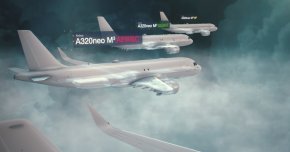Uncovering truth from Indian & Chinese nationalist propaganda — Part 2
6. China has in the last three decades, transformed its navy, air force and army. The PLA is prepared to use force to pursue its policy; and has enforced a status quo with respect to border infrastructure on its own terms. In Dec 2020, Chinese President Xi Jinping has appointed Gen. Zhang Xudong as the Commander of the Western Theatre Command, which oversees the China-India border, amidst the military standoff in eastern Ladakh. Xi has promoted three other senior Chinese military and armed police officers. Among them includes Guo Puxiao, Political Commissar of the Logistic Support Department of the CMC; Li Wei, Political Commissar of the PLA Strategic Support Force and Wang Chunning, Commander.
(a) In the meanwhile, the clueless Indian ministry of defence is belatedly re-thinking the protocol followed by its soldiers of carrying firearms in the forward areas, given that PLA has flouted the 2013 Border Defence Cooperation Agreement (2013 BDCA) and 4 other agreements, including the
1996 CBM on the LAC Agreement — these agreements lay down norms to exercise restraint in use of weapons during confrontations.
(b) But that is for border policing in normal times and not during military operations. The agreement does not lay down any restrictions on carriage of weapons. Moreover, when the lives of soldiers is threatened, the commander on the spot can use all weapons at his disposal, including artillery fire. The decision to not carry weapons was deliberate and a wrong one taken by the military hierarchy.
7. Despite the potential for clashes at the LAC,
five major Sino-Indian agreements have – until now – largely kept the peace. The first of these, the Border Peace and Tranquillity Agreement (BPTA), signed in September 1993, is the “mother agreement.” It was supplemented with the 1996 confidence-building measures (CBM) on the LAC agreement; a 2005 standard operating procedures for patrols that come into contact agreement; a 2012 agreement that sets out processes for consultation and co-operation; and, most recently, the 2013 BDCA. Both Beijing and New Delhi realise that a mutually delineated LAC would end the uncertainty that causes troop clashes.
(a) The 1996 agreement explicitly notes the need for a “common understanding of the alignment of the line of actual control in the India–China border areas”.
(b) It states that the two sides “agree to exchange maps indicating their respective perceptions of the entire alignment of the line of actual control as soon as possible”. However, China stonewalls the exchange of LAC maps, keeping alive the window for clashes.
8. In the standoff between India’s 14 Corps led by Lt General Harinder Singh and the Xinjiang Military Command, led by Major General Lin Liu, we see a fiasco unfolding at multiple levels for both Beijing and Delhi.
On the one hand, the PLA and the CCP have a PR fiasco for initiating the attack and killing Indian soldiers with nail-studded rods. The PLA is shown as engaging in thuggery, not soldiering —destroying PLA’s hard earned international reputation, as military professionals, by its strong participation in numerous UN peacekeeping operations and its evacuation of 35,860 Chinese nationals stranded in riot-torn Libya — rescued in a huge air, sea and land operation in Feb and Mar 2011. This thuggish mindset is like the Johnson South Reef Skirmish that took place on 14 March 1988, where the PLA(N) was perfectly willing to gun down Vietnamese troops attempted to erect the Vietnamese flag on the reef.
On the other, the Indian BJP government suffered from a credibility gap given its hyper nationalist language usage, obvious spin control with lies and actual actions — where it is ONLY re-thinking the protocol followed by its soldiers of not carrying firearms.
- There is also a gap the Indian ability to conduct timely ISR to support its unarmed troops under attack.
- And I am not even sure if they have a QRF for timely rescue of the injured.
- The BJP government should have given powers to the the Indian military to make emergency procurements to stock up its war reserves, months ago (and not just after 20 had died). If that had been authorised months ago, it would have signalled real resolve.
9. IMO, like China’s propaganda mouth pieces, BJP’s jingoistic rhetoric also does not allow critical engagement in any sphere. It projects anything critical of the BJP ruling party as anti-national.
(b) Likewise the previous government failed to conclude the MRCA tender for 126 fighters and only ordered 11 C-17s by moving too slowly before the line closed (when they had a requirement for 16). In the 2011 C-17 contract, for 10 aircraft, was worth US$4.7 billion, India had an option to purchase 6 more C-17s over its order of ten. However, a lack of funds ensured that the follow-on order was not processed.
10. From China’s arms procurement perspective, India does not have a competent arms procurement process —India’s ruling party and its opposition can never find a bipartisan path forward to spend on defence. Even now, with Indian soldiers dead and injured the politicians are more or less engaging in political stunts to blame each other rather than finding a fix to their problems in defence. Correctly understood, it has a ministry of defeat, instead. The Indian defence ministry also took years to sign the Communications Compatibility and Security Agreement (COMCASA) with the US, despite years of buying American weapons. Without COMCASA, the Americans had to strip out equipment on aircraft sold to India, including crucial comms equipment for the Indian P-8Is.
11. The real art of public policy is not treating security and prosperity as strict alternatives but finding ways that get the most for both.
12. PLA’s June 2020 hostile action to gain some inconsequential land along the LAC has resulted China destroying the trust created by prior border agreements and creating another enemy, when they could have kept India in the neutral camp.




